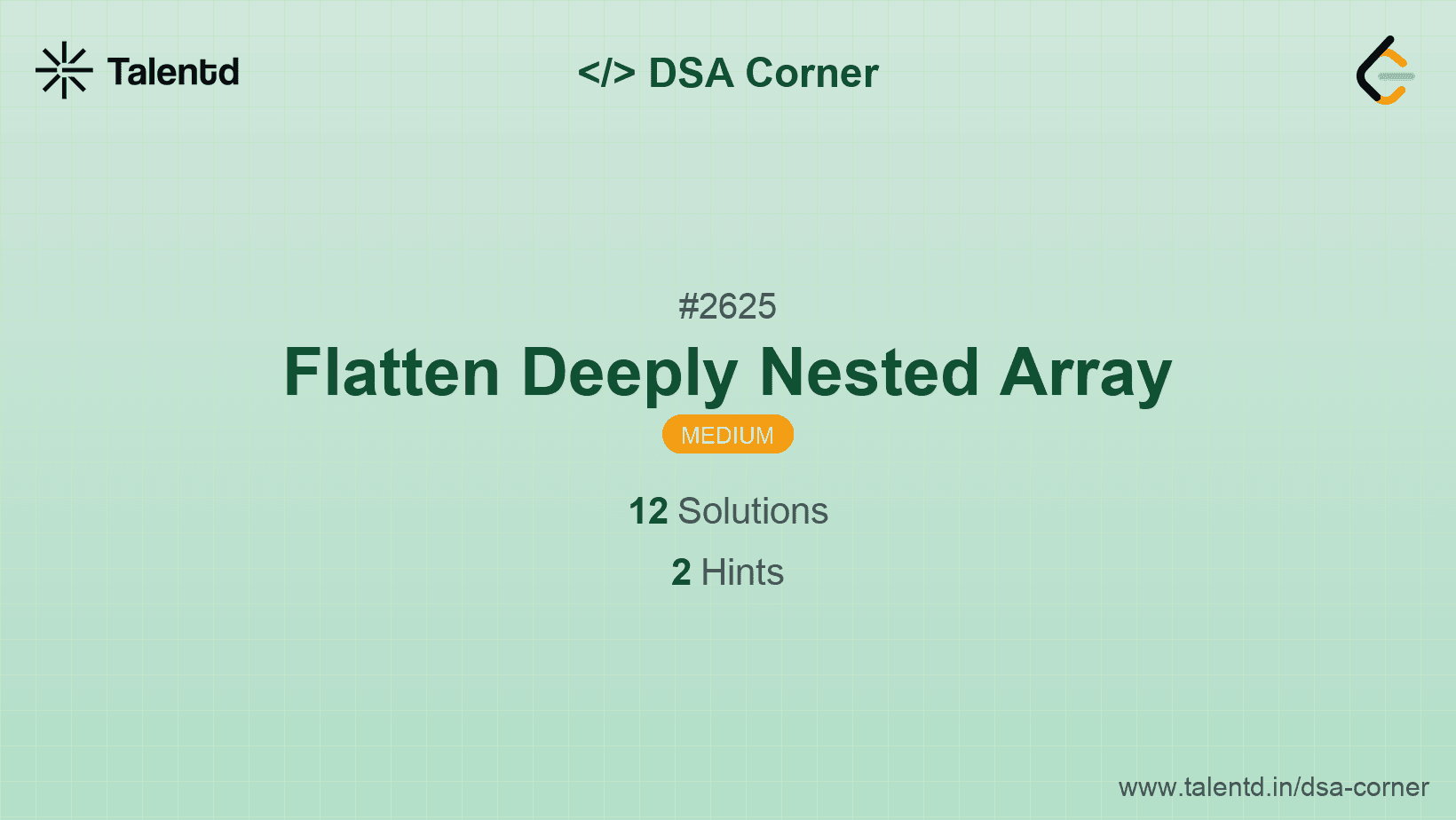
Sponsored
Sponsored
The idea behind this approach is to use recursion to flatten the array up to the specified depth n. If the current depth is less than n, we continue flattening; otherwise, we do not flatten further. We leverage recursive calls to process each element and manage the depth level.
Time Complexity: O(m) where m is the total number of elements in the array considering all levels.
Space Complexity: O(m) due to recursive stack space and storage of flattened elements.
This Java implementation uses a recursive helper method to iterate over each element. When encountering a nested list, it checks the current depth against the flatten threshold. If within range, recursion continues; otherwise, cascades sub-elements directly.
This technique leverages a stack data structure to simulate recursion iteratively. By using an explicit stack, we can iteratively flatten the array, taking control of the depth level without using the actual recursive calls within the stack frames.
Time Complexity: O(m), iterating through each array element.
Space Complexity: O(m) due to storage in stack elements.
1// This C++ code uses a stack-based iterative approach.
2#include <iostream>
3#include <vector>
4#include <stack>
5using namespace std;
6
7vector<int> flattenArray(const vector<int>& arr, int depth) {
8 vector<int> flat;
9 stack<pair<const vector<int>*, int>> stk;
10 stk.push({&arr, 0});
11
12 while (!stk.empty()) {
13 const vector<int>* sub_vec = stk.top().first;
14 int i = stk.top().second;
15 stk.pop();
16
17 while (i < sub_vec->size()) {
18 const auto& el = (*sub_vec)[i++];
19 if (el == -1) { // Assuming a condition indicates subarrays
20 vector<int> mockSub{7, 8};
21 if (depth > 0) {
22 stk.push({sub_vec, i});
23 stk.push({&mockSub, 0});
24 break;
25 }
26 } else {
27 flat.push_back(el);
28 }
29 }
30 }
31
32 return flat;
33}
34
35int main() {
36 vector<int> arr = {1, 2, -1, 3}; // Simplified representation
37 vector<int> result = flattenArray(arr, 1);
38 for (int x : result) cout << x << " ";
39 return 0;
40}This non-recursive C++ implementation uses a stack for depth control manually, and iteratively processes the outermost sub-array before diving into deeper subarrays if the depth permits. It demonstrates how stacking can replace recursive depth management.